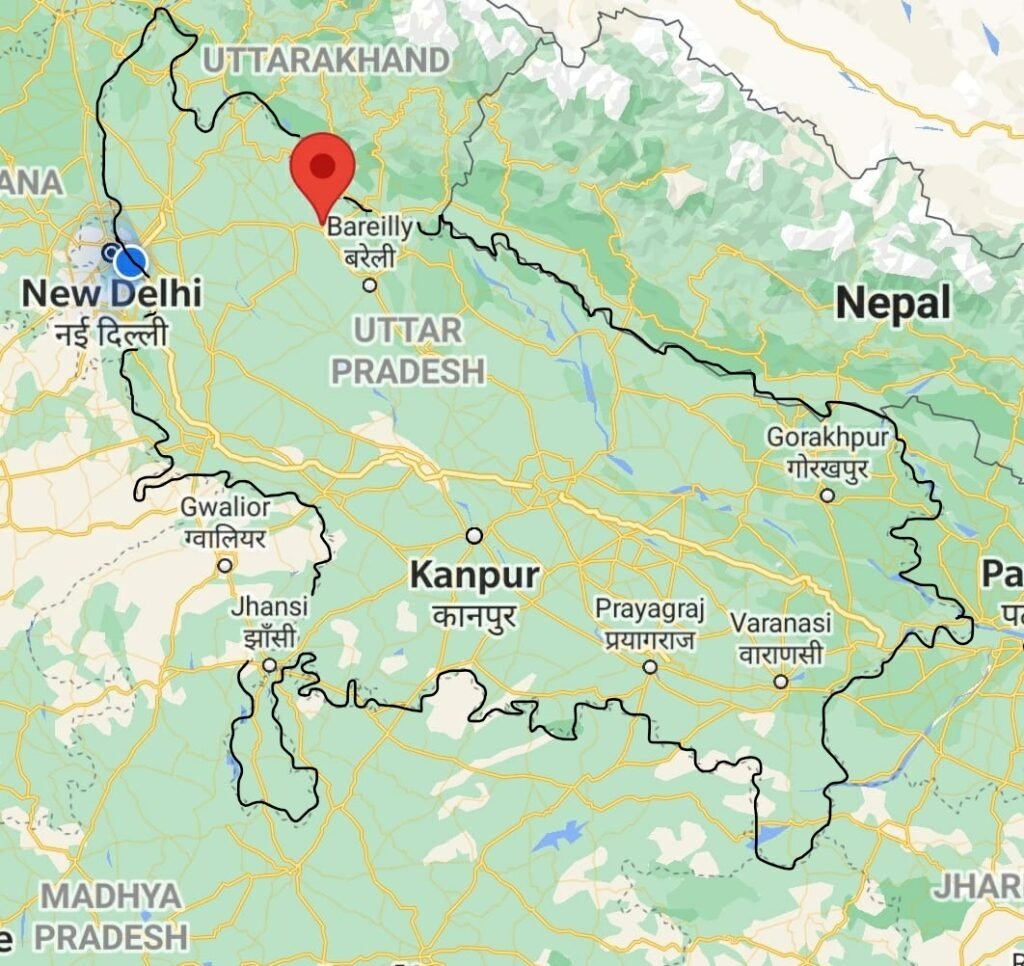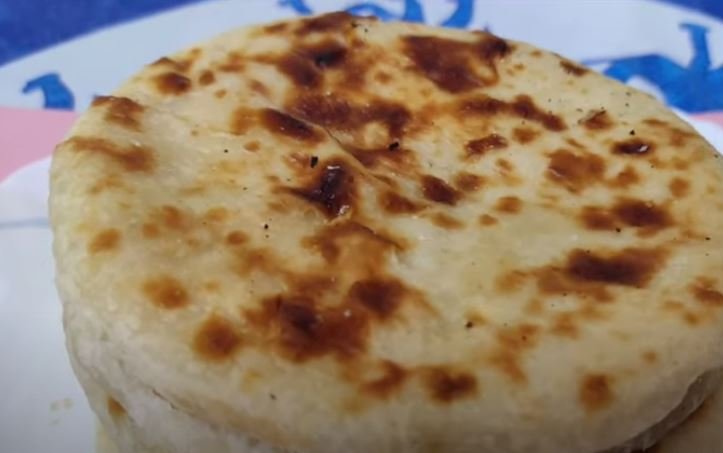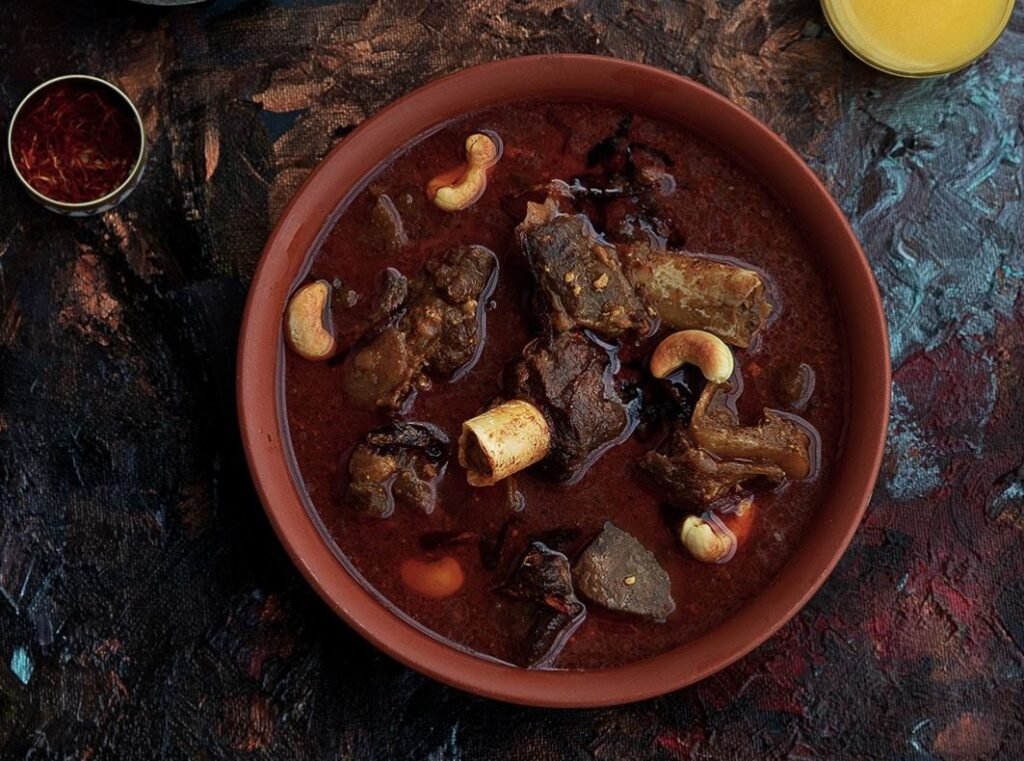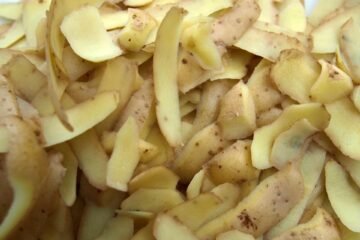Rampur cuisine reminds me of the Japanese concept of Ikigai— the concept of having a purpose in life which provides one with a sense of fulfillment and a sense of meaning. When you first hear a traditional chef from Rampur talk reverently about their traditional dishes and the skills of their ancestors, you just know that the art of cooking is their purpose in life.
But before we delve deeper into the innovations and ikigai of Rampur cuisine, let’s first understand how the environment of such culinary enthusiasm came into being.
A Brief History of Rampur

Rampur district is in the north-west part of Uttar Pradesh, a part of Moradabad division of the state. It began as a group of four villages named Katehr after the Katheria Rajputs. The region then came under the influence of Rohilla Pashtuns, who were later defeated in the First Rohilla war in 1774. The city of Rampur was eventually set up by Nawab Faizullah Khan, whose royal family stayed under the aegis of the British thereafter.
It was under the rule of the latter that the modern culture and lifestyle of Rampur thrived. The city became famous for its poetry, architecture and classical music. And along with these forms of art came the biggest and most enduring one— the Rampur Royal Cuisine.
As the new royal family settled down in the region, famous chefs from all surrounding areas of Delhi, Awadh, Kashmir, Hyderabad, etc. were invited into the royal kitchens. Each chef brought with them the flavours of their homeland. The chefs were artists in their own way and were respected as such. Chefs were handpicked by culinary geniuses, many of them specialising in single ingredients like rice. Imagine having a chef specialising only in pulao, and one specialising only in halwas!
The Rampur royal kitchens nurtured these culinary talents, and even held regular competitions to boost innovation among the chefs. Cooking was not just a means of livelihood for the Rampur royal cuisine chefs, it was their ikigai. It gave them a sense of purpose and fulfillment.
And in such a nurturing environment does talent thrive. Rampur cuisine specialises in making unique dishes out of extraordinary ingredients. Some of the best culinary innovations in our country have come from this small area in Uttar Pradesh,
Characteristics of Rampur Cuisine
Rampur cuisine is not just food, it is a distinctive aroma. It is the aroma of dry spices and rose. It is the aroma of charred kebabs and leavened breads. It is a fine balance between all the cuisines it is inspired from. It is not as spicy as Delhi’s cuisine, nor as delicate as Lucknow’s Awadhi cuisine. It is not as rich as Mughlai cuisine, nor as sour as Hyderabadi cuisine.
The dominant flavours are of onions, ginger and whole spices. Onions, in fact, may be the single-most important ingredient in this cuisine, forming the base of gravies as well as halwa.
Important ingredients also include bottle gourd, lotus stem, jackfruit, figs, pineapple, khus roots and amla. The use of locally grown ingredients like the unique Rampur yellow chilli gives Rampur cuisine its distinctive flavours.
In this article, I have researched some recipes of Rampur cuisine. Due to the secrecy of the cuisine, the exact recipe is not available, but given below are some close-to-authentic recipes I was able to find. If you get as hungry as I did while reading this article, you may want to try out one or two recipes. 🙂
Famous Food of Rampur
Here is some amazing food from the Rampur cuisine:
1. Varied Breads
Some famous breads of Rampur cuisine are the nutty flavoured fitri naan, the sweet and salty sesame-sprinkled naan-e-tanak, and the sweetish saffron-infused sheermal. One of the most royal and distinctively Rampur breads is the Badam Ki Roti which is made from the flour of ground almonds. Other breads include the raisin-infused kishmishi parantha, the thick and biscuity bakarkhani, the cardamom, saffron and poppy seeds infused taftoon or taftan and the yeast-leavened khameeri roti.
One of the most interesting breads is the ghilafi kulcha which is a bread stuffed with another… bread! Yes, ghilafi means cover in Persian and this bread is made up of a yeast-leaved fluffy kulcha encasing an inner unleavened sweet bread. Here is the recipe for this unique kulcha.
2. Flavourful Gravies
Rampur cuisine has some rich and flavorful recipes, especially the non-vegetarian ones. Among these, nargisi kofta is a commonly known one. The vegetarian gravies include the Hyderabad-inspired baghare baingan and the sour arbi ka salan.
But Rampur taar korma is one of the most famous gravies, nay, dishes of Rampur cuisine. It is a succulent lamb gravy made from a base of slow-cooked onions and spices. Some other special ingredients include foxnuts and melon seeds as gravy thickeners and Rampur yellow chilli as a spicing agent.
The ‘taar’ term is given to the dish because of the silken gelatinous consistency of the lamb stock. The sign of a proper Taar Korma is that when you touch the gravy of the dish with the back of the spoon and lift it, the gravy should stick to the spoon and flow down from it like a taar or string. The broth is so important to this dish, that in earlier times, a little of the broth from the previous day was added to the broth of the next day’s taar gosht. And hence, one kitchen would be serving the ‘descendent’ taar of a taar gosht for years! Here is the recipe for Rampur Taar Korma.
3. Succulent Kebabs
How can one have the best chefs from Lucknow and Hyderabad and not have the best kebabs in their kitchen? Rampuri cuisine also has their own variant of the chapli kebab and shami kebab. One interesting invention here was invented due the one of the hobbies of the royalty at that time- hunting.
The newabs would hunt animals in the forest, and then would want to eat the meat immediately after hunting. To sidestep the long process of marination of the meat, the kacche keeme ke kebab recipe was developed by the Rampuri chefs to help the Newabs eat succulent kebabs fresh from hunting.
4. Unusual Lentils
Not only meat, but lentils were also a popular ingredient in the Rampuri palace. The lentils were cooked in unusual ways to add flavour as intense as that of the non-vegetarian fare. One such dish was the the ittr dal, made of tur dal in milk, cream, ghee and ittr (sweet essence). Another interesting variant was the channe dal ka bharta, a creamy concoction of chana dal. Yet another variant is mash ki dal, which uses white urad dal and cooks it in a simple yet flavourful broth of ghee, ginger and spices. Following is the recipe for mash ki dal.
5. Innovative Desserts
The Rampuri chefs were always open to challenges— when a certain royal family member was prescribed ginger everyday for good health, the cooks came up with a ginger halwa. When neem was recommended, they came up with a neem leaf halwa. In fact, Rampur khansamas are famous for unique halwas made of onion, garlic, green chilli, karela, egg, chicken, fish and mutton!
A mixture of ginger, milk and dry fruits is cooked slowly to give rise to the delicious mellow flavoured gingery adrak halwa. Here is the recipe for adrak ka halwa. If you are in the mood to try the other interesting halwas, you can also take a look at the recipes of other halwas here.
Another famous dessert is gulatthi, a type of rice kheer or pudding with addition of special flavours like chironji.
Rampur Cuisine vs. Awadhi Cuisine
The chefs of Rampur have been very secretive about their traditional recipes and hence Rampur cuisine is rarely-known. Recipes are preserved by being passed on within generations of its culinary families. Because of this lesser-known nature, it is often overshadowed by its close cousin— the Awadhi cuisine. In fact, two culinary techniques which are attributed to Awadh are actually Rampur innovations. The first is the technique of tenderising meat for kebabs using bottle gourd or papaya. This was developed by Rampur khansamas. The second is the use of silver foil to cover dishes. This was also developed in Rampur for two reasons— to keep the dishes succulent and juicy, as well as to serve as a sign of surety that the food has not been touched by anybody.
While the taste of Awadhi and Rampur cuisine is a little similar, the key difference lies in the use of spices. Awadhi food uses ground spices, while Rampur cuisine uses whole spices.
I hope you found the elusive Rampur Cuisine as interesting and mind-boggling as I did. Cuisines and recipes live on when we try them out in our houses and appreciate their flavours and nuances. My house enjoyed the aroma of Rampuri spices the whole time I was researching this cuisine and trying out some recipes at home. I hope that you get time to try out some as well and enjoy the passion and culinary reverence of chefs of a genius era.






